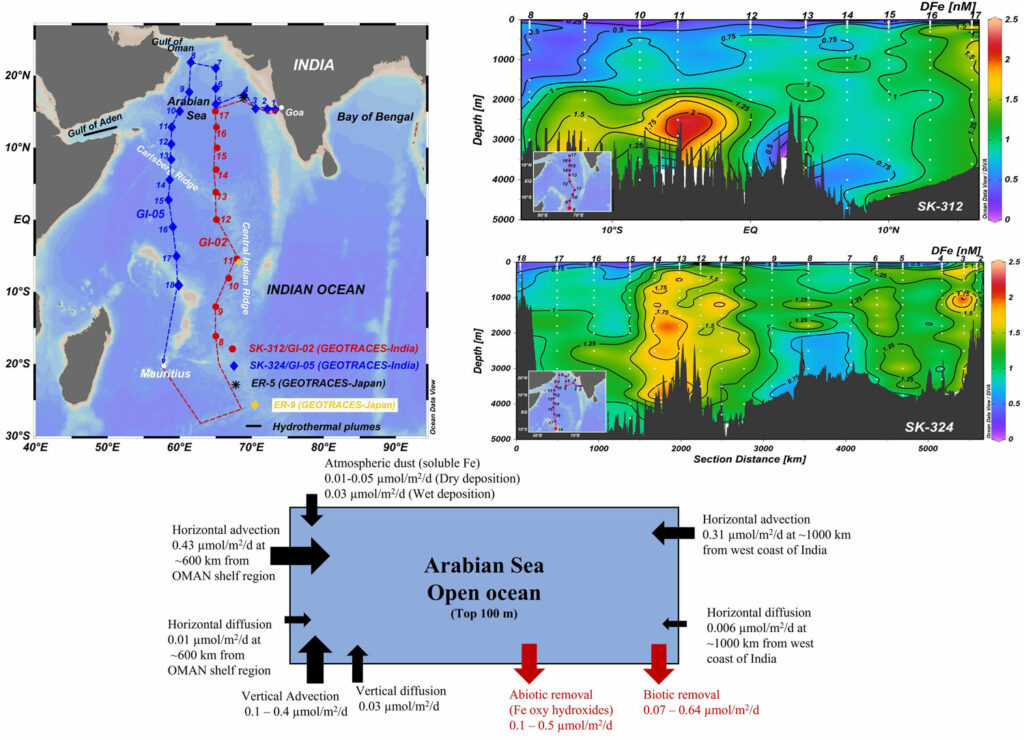Specific features characterize the dissolved iron distribution in the North Western Indian Ocean
Venkatesh Chinni and Sunil Kumar Singh (2022, see reference below) propose dissolved iron (DFe) profiles along two meridional transects realized during spring and fall seasons between the Arabian Sea and the sub-tropical western Indian Ocean. Their very high-resolution profiles reveal interesting specific features of this area:
- DFe is significantly enriched in the photic zone of the Arabian Sea compared to the subtropical Indian ocean (integrated values are 57.5 ± 13.4 mmol.m2 versus 31.81 ± 7.63 mmol.m2 respectively). They also strongly suspect that DFe is responsible for high primary production in the Arabian Sea compared to the subtropical Indian Ocean.
- This area is characterized by an intense oxygen minimum zone (OMZ) off the Somalian, Oman and eastern Arabian Sea coasts. Continental margin sources, redox chemistry, and remineralization are responsible for the observed high DFe concentration within this OMZ. The in-situ remineralization ratios of iron to carbon in the Arabian Sea are higher than any other region of the Indian Ocean.
- Significant inputs of hydrothermal origin are also identified.
- The geochemical budget for iron in the top 100 m of the complex Arabian Sea basin indicates higher inputs from lateral and vertical advection with a secondary role of dust deposition whereas both biotic and abiotic removal processes are sufficient to balance the sources.
- This study also reveals that a large part of the Arabian Sea in south and in the northwest are iron deficient. The intrusion of Southern Ocean waters and upwelling of iron deficient deep water alongside the Murray Ridge both likely cause iron limitation in the Arabian Sea.

Reference:
Chinni, V., & Singh, S. K. (2022). Dissolved iron cycling in the Arabian Sea and sub-tropical gyre region of the Indian Ocean. Geochimica et Cosmochimica Acta, 317, 325–348. DOI: https://dx.doi.org/10.1016/j.gca.2021.10.026
